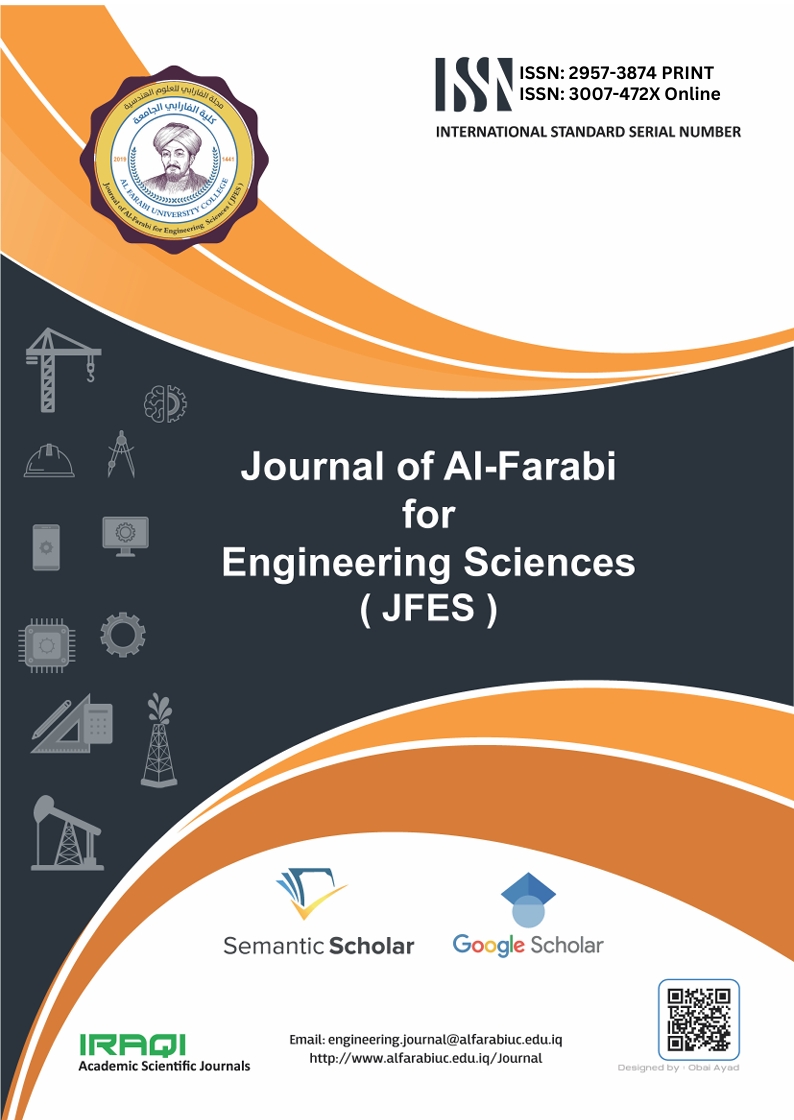Abstract
The study area is located in the western part of Iraq within the administrative borders of Anbar
Governorate and adjacent to the Iraqi-Jordanian-Syrian borders within the 37 zone and an area of 61600
km². The region is characterized by its rugged desert nature, where altitudes range between (500-900)
meters above sea level, interspersed with some valleys, and the altitudes increase towards the southwest.
Structurally, the study area is located in the stable shelf within the Al-Ma’aniyah-Al-Rutba zone (Al-Rutba
belt) and the Al-Salman-Hatra zone (Akashat-Kubisa belt) .
The study aim to determine the hydrocarbon presence in the Western desert region using remote sensing
technology and to indicate the type of trap, whether it was a structurally, stratigraphic or combined .
The map of the Bougier anomalies showed the values of gravity ranging between (-60 and -10) mg Gal
within the study area, increasing towards the north and north-east and decreasing towards the south and
southwest, and that the axes of the anomalies within the region are towards northwest - southeast. These
anomalies reflect the effect of the movement of the base rocks on the crustal rocks. The residual gravity
showed the presence of a number of positive anomalies within the first study area, whose value is (4) mg
Gal in the eastern part of the study, whose value is (6) mg Gal, and the second, whose value is (4) mg Gal,
in the northern part, in addition to two anomalies whose value is (8) mg Gal located in the western part of
the study. Along the Iraqi-Jordanian border. The magnetic intensity map showed the presence of two
magnetic anomalies with high values, the first located in the southeast of the region and the other in the
northwest of the region, that these two anomalies reflect the presence of two convex high in the region.
On the other hand, two negative anomalies appear in the center and north of the region that reflect the
presence of a concave depression in that part of the study area.
Governorate and adjacent to the Iraqi-Jordanian-Syrian borders within the 37 zone and an area of 61600
km². The region is characterized by its rugged desert nature, where altitudes range between (500-900)
meters above sea level, interspersed with some valleys, and the altitudes increase towards the southwest.
Structurally, the study area is located in the stable shelf within the Al-Ma’aniyah-Al-Rutba zone (Al-Rutba
belt) and the Al-Salman-Hatra zone (Akashat-Kubisa belt) .
The study aim to determine the hydrocarbon presence in the Western desert region using remote sensing
technology and to indicate the type of trap, whether it was a structurally, stratigraphic or combined .
The map of the Bougier anomalies showed the values of gravity ranging between (-60 and -10) mg Gal
within the study area, increasing towards the north and north-east and decreasing towards the south and
southwest, and that the axes of the anomalies within the region are towards northwest - southeast. These
anomalies reflect the effect of the movement of the base rocks on the crustal rocks. The residual gravity
showed the presence of a number of positive anomalies within the first study area, whose value is (4) mg
Gal in the eastern part of the study, whose value is (6) mg Gal, and the second, whose value is (4) mg Gal,
in the northern part, in addition to two anomalies whose value is (8) mg Gal located in the western part of
the study. Along the Iraqi-Jordanian border. The magnetic intensity map showed the presence of two
magnetic anomalies with high values, the first located in the southeast of the region and the other in the
northwest of the region, that these two anomalies reflect the presence of two convex high in the region.
On the other hand, two negative anomalies appear in the center and north of the region that reflect the
presence of a concave depression in that part of the study area.
